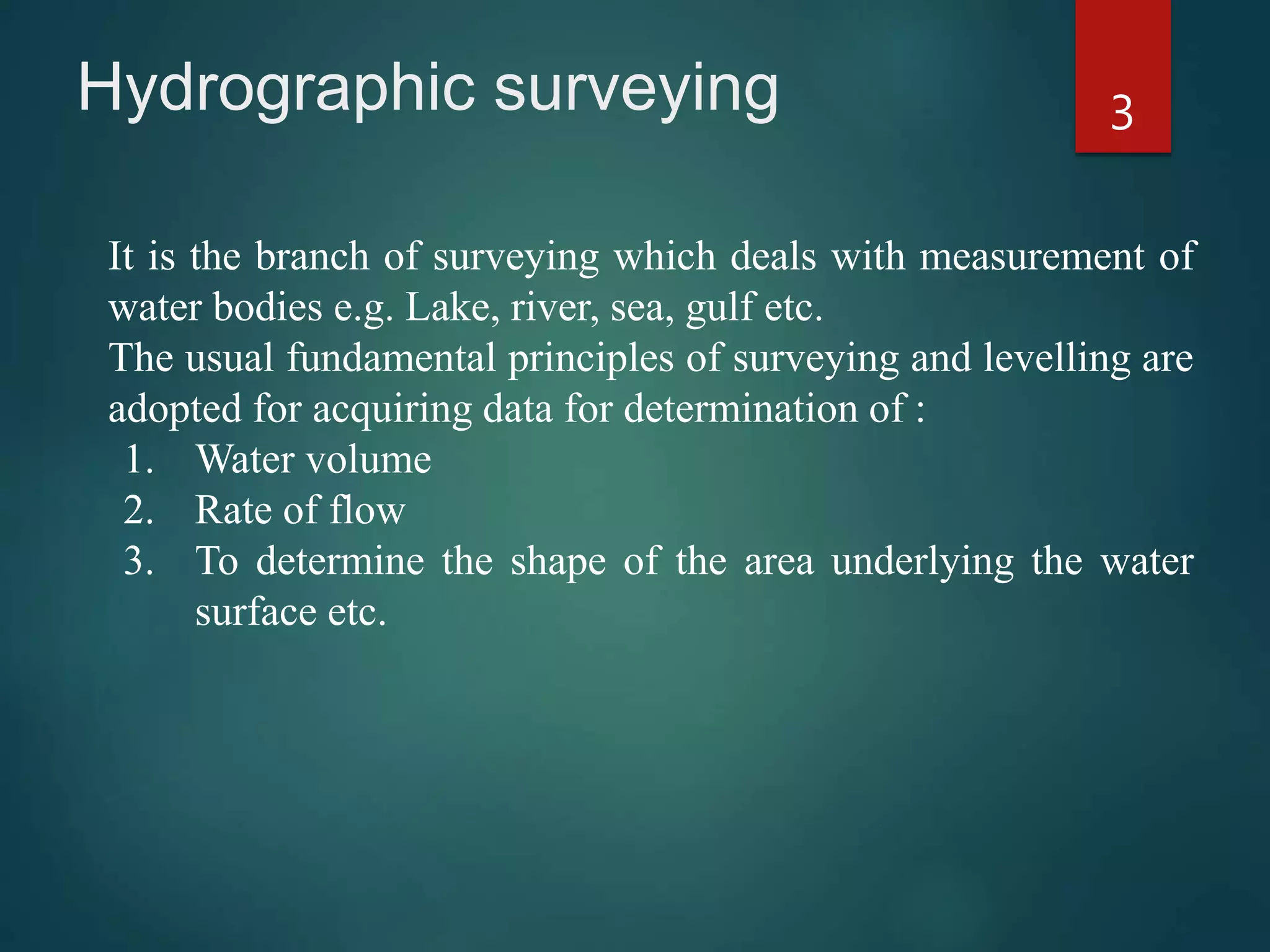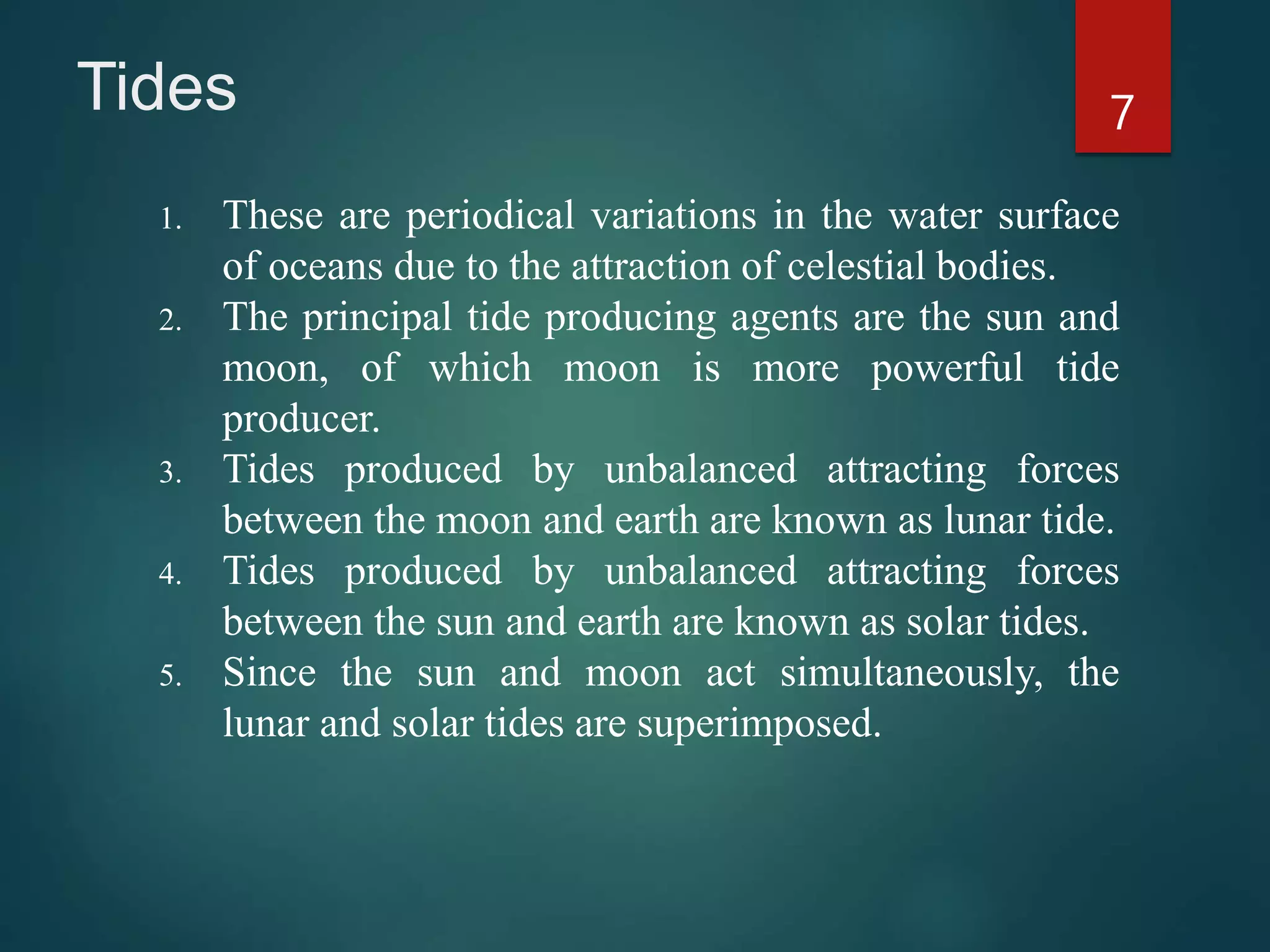This document provides an overview of hydrographic surveying. It discusses the purposes of hydrographic surveying such as determining water volume and flow rates. It describes the equipment used including sounding poles, lead lines, tide gauges, and echo sounding machines. Methods like establishing range lines perpendicular to shorelines and taking periodic soundings are covered. The effects of tides like spring and neap tides are also summarized.













































